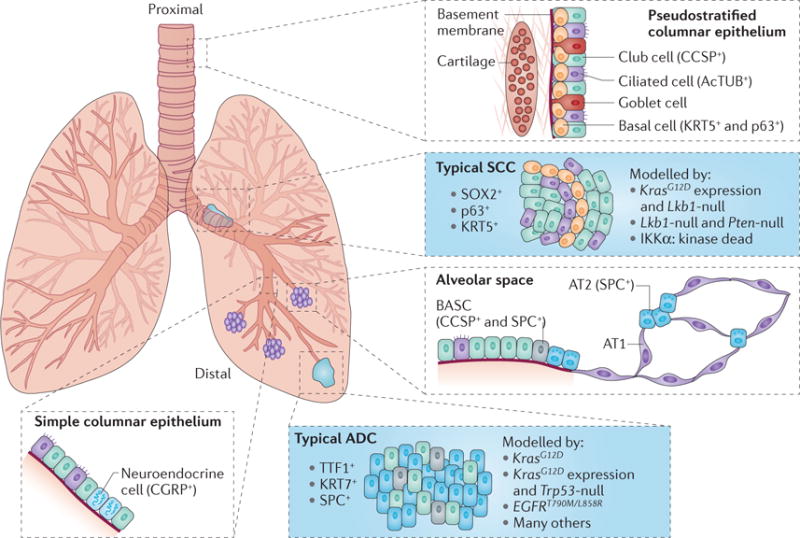Figure 2. A diagram of proximal and distal lung cells, indicating markers that are retained in carcinomas and putative squamous cell carcinoma (SCC) and adenocarcinoma (ADC) cells of origin.

Diverse lung stem or progenitor cell populations are thought to have the ability to drive lung oncogenesis in different contexts. In the proximal lung, the tracheal basal cell has been proposed to be the cell of origin for lung SCC. The evidence for this relationship includes the expression of p63, SRY-box 2 (SOX2) and keratin 5 (KRT5) within the basal cells, squamous metaplasia of the basal cells (common in smokers), and squamous cell carcinomas. Squamous tumours are modelled in mice by KrasG12D expression and liver kinase B1 (Lkb1) knockout (20% of lesions are squamous), knocking in a germline dominant-negative kinase-dead inhibitor of nuclear factor-κB kinase subunit-α (IKKα) and knocking out both Lkb1 and Pten (100% of lesions are squamous for the second two models). Two bronchiolar cell populations, the bronchiolar progenitor cells and the bronchioalveolar stem cells (BASCs) may also be able to give rise to tumours with squamous characteristics, although experimental lineage tracing is needed to confirm this theory. ADCs can be modelled by KrasG12D expression (long latency), KrasG12D expression and Trp53-null, and epidermal growth factor receptor (EGFR)T790M/L858R, among other genetic models, and they are thought to arise from more proximal airway cells. These tumours often retain characteristics of proximal airways, such as the expression of surfactant protein C (SPC), KRT7 and thyroid transcription factor 1 (TTF1). Again, BASCs or bronchiolar progenitor cells, which are able to give rise to alveolar lineages after lung injury, may likewise be able to give rise to tumours with alveolar characteristics. AcTUB, acetylated tubulin; AT, alveolar epithelial type; CCSP, club cell secretory protein; CGRP, calcitonin gene-related peptide.
